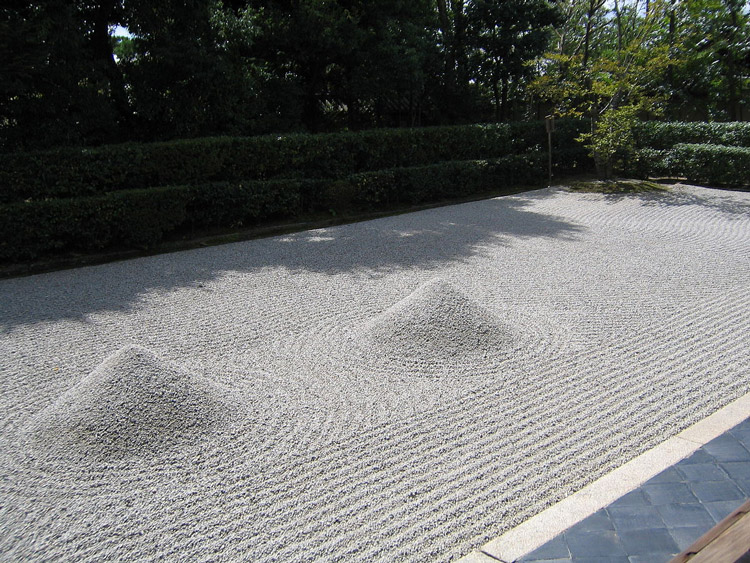The word Zen has been used a lot to the point that its connotations do not have any relation to Buddhism or to its propositions. When it is used as a slang, the word would usually refer to peace of mind or relaxation. However, the word Zen has a much deeper meaning to it and it actually refers to the Japanese school of Buddhism. In this article, we will further discuss the importance of Zen to Japanese culture, especially in its influence in their architecture.
The Origins of Zen Buddhism
The word Zen originates from the Chinese word Ch’an which comes from the Sanskrit word Dhyana which basically means “meditation.” Zen Buddhism is Japanese Buddhism that is influenced by Mahayana Buddhism and Taoism. It originated back in the sixth century in China embodying Chan Buddhism and it spread to Japan later on in the 13th century.
The Lotus Position: Zazen

Features of this religion reference to ideas such as the lotus position called zazen and those who practice the religion usually attribute it to the Indian version but also acknowledge the influence from Chinese roots. The overall idea of Zen gives importance to personal reflection of life in the goals of reaching enlightenment.
Emptiness: Sunyata

To further understand Zen Buddhism, it is significant to discuss the thought of emptiness or sunyata. In Mahayana Buddhism, the six perfections or paramitas are practiced as values that give aid in the enlightenment of an individual.
Particularly, we give focus to one of these perfections, the Prajnaparamita or the Perfection of Wisdom. The concept of emptiness can be found in the Mahayana scripture, the Heart Sutra or the Prajñāpāramitāhṛdaya, also known as the Discourse on the Heart of the Perfection of Wisdom that echoes the teachings in the Prajnaparamita on emptiness.
The Heart Sutra deepens the concept of emptiness. Emptiness is not equated to nothingness. In relation to the Pranjnaparamita, it tells us that all phenomena are not independent and are connected with one another. The concept of emptiness asserts that which exists does not exist on its own and it relies on our mind that thinks it. “Form is emptiness (śūnyatā), emptiness is form.,” according to the Heart Sutra.
What is Chan Buddhism?

Going back to certain roots, Chan Buddhism focuses on the self when discussing emptiness. Master Sheng Yen teaches that emptiness is not of the things that surrounds people but pertains to the non-self. This emptiness stems from impermanence and the nature of change in the world.
Similar to the meaning of emptiness in Indian Mahayana Buddhism, it does not equate to nihilism. This is likened to the Prajnaparamita’s lack of self-essence, in which emptiness refers to all phenomena that are in constant change thus everything is temporary.
In Zen Buddhism, this emptiness is not a result of despair but it is the start of possibilities. During the medieval period, this concept has affected Japan. Ideas would come from the Hannya shingyo sutra, which is also called the Prajñāpāramitāhṛdaya in Sanskrit and is one of the important sutras in Buddhism. This Buddhism includes reflection on ideas such as shiki soku zeki which implies that everything with forms holds no reality. These ideas can be seen in other forms of literature in Japanese culture.
Enlightenment and the Pagoda
The founder of Buddhism, Siddharta Gautama, attained supreme Enlightenment under a Bodhi Tree. With this, Buddha was able to realize the “Four Holy Truths,” one of which is the Eightfold Path. The basics of the Eightfold Path can be related to the conception of the Pagoda and temple.

It can be based on the lotus’ petal symbol and is used as the octagonal design plan of the structure. In Buddhism, the pagoda is a tower that can be built in an octagonal shape and can be usually found in East and Southeast Asia. In Japan, these pagodas are tall constructions and have odd numbers as floors referencing different things such as success and elements.

An example of a pagoda is the Anraku-ji Temple in Nagano, which is one of the oldest temples in Japan and is referred to as a national treasure. Most importantly, it is the last pagoda in Japan with an octagonal shape.
Enlightenment and the Harmika


The stupa in Indian Buddhism is a monument that is used to store sacred relics related to Buddhism. Part of the stupa is the harmika that holds much importance to Buddhism. Concerning Buddhist architecture, the harmika symbolizes heaven.
For the Pagoda, the harmika or the ukebana is on top of the tower and is also part of the sorin. It marks the world’s center where enlightenment is found. The sorin which is usually on top of the Pagoda tower reminds one to look to the cosmos.
Space and the concept of Ma
These principles about Buddhism are then translated into Japanese architecture or Kukan in their areas, where emptiness is valued. The word kukan consists of ku meaning sky and kan meaning interval. The word Ma is also an important word that can be related to this word as well.
Ma or negative space, is a concept that understands space as being able to create meaning. The characters for Ma, include the word door 門 and sun 日 which forms an image of a doorway. In Japanese architecture, the Ma is expressed through the space between the interior structures. These structures are made to include space and welcome possibilities.

Applications of the idea of Ma are found in the interior design of rooms and gardens. One example is the rock garden or the Daisen-in garden, which is regarded as a Zen Buddhist garden that can be found in the Daitoku-ji temple compound. In this garden, a part of it is void of rocks and leaves only a space for sand.


Similar to this is the karesansui rock garden that featuring rock formations in Ryōan-ji, a Zen temple in Kyoto.
Traditional tea houses exude the principle of Ma, thriving in emptiness. There are little to no ornaments and they emphasize the emptiness of the inside.

Tatami rooms are also a great example, wherein possessions are hidden and some things are placed carefully to accentuate the presence of emptiness.

These areas give importance to the core philosophy of Ma that frees one from attachment. They lack ornamental furniture and allow for the opportunity of detachment. Ma gives us the importance of finding value in the silence or emptiness.
It teaches us the essentiality of a room may not be in its walls but in the empty space found and the experiences that happen in it. An empty room allows the human’s presence to fill in the void and where they can be free.


















































